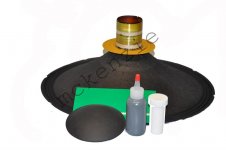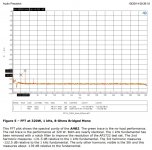I had to do some mental maths there to be sure I understood what you meant there!.
We are old farts, unfortunately nothing much from 1950 was worth keeping.
Those graphs people have been posting remind me of why I use the amp I do.
What's the phase of the seconds?
What's the phase of the seconds?
Don't know, don't care, can't hear them.
Still got the amp but without the extra heat sink.
Left 225WRMS Maplin bi-polar amp.
Top 50WRMS Maplin bi-polar amp
Bottom 75WRMS Maplin lateral mosfet amp.
maplin_3amps | harrabylad | Flickr
Left 225WRMS Maplin bi-polar amp.
Top 50WRMS Maplin bi-polar amp
Bottom 75WRMS Maplin lateral mosfet amp.
maplin_3amps | harrabylad | Flickr
Don't know, don't care, can't hear them.
Are you sure?
Are you sure?
I'm never sure, philosophically speaking.
Say, wasn't it you who once suggested that people around here consider other amplifier topologies besides the old blameless type of thing?
Myself, I have my hands more than full at this stage in life working with dacs, something I never intended to be doing when I started out. But, you know, if you keep thinking about something enough eventually you start to understand it better. Of course, there is nothing new, as you have often pointed out. Electronics is a very mature field.
At this point, I have no intention of getting involved with power amps. Probably, not in this lifetime. But, what about you guys? You going to keep debating bias levels forever?
Years ago I simulated a very similar amplifier with the MOSFET drivers, like in A21. I was thinking about using the MOSFET drivers instead of 15030/31. But, the simulation result was full of high order harmonics, for higher power. Idle current is 85mA per pair, there are 4 pairs like in the A21. 19mV across one Re output stage resistor ......
I had a similar experience, except that I had built the amplifier and also
had the opportunity to listen to it. Unfortunate combination.
For the record I'm not a believer in these "optimum" bias points at all. For one thing they are very sensitive to temperature. IMO there is nothing like turning up the bias and using massive heat sinks, something like 500mA bias for a 100W/8 Ohm amp.
The bipolar Stasis amplifiers from '78 to '92 had an optimum bias point
where it measured the lowest distortion, but all agreed it sounded better
with more bias, and that's how they shipped.
This is unfortunate, but I knew the day would come. '-) I am always after Parasound to run these amps in the recommended range, between 15-25mV, but they tend not to do so with the less expensive models. I don't know what they recommend specifically for the A21, but I suspect that it is too low. This is because so many people worry about the heat coming from the amp more than anything else. As far as the mosfets are concerned, I will stick with them, but I might recommend that the successor to the A21, yes there is one, have the driver mosfets biased higher. It is just a couple of resistors changed in value. Thanks for the info PMA.
Last edited:
I have a soft spot for the original Hitachi Laterals, all my amps use them...................well, almost all> It always used to scare me as it ran so hot.
We once accidently left an amp driving a hard load until it smokily desintegrated.
But yet the mosfets ( Hitachi ) survived : )
Say, wasn't it you who once suggested that people around here consider other amplifier topologies besides the old blameless type of thing?
Not me, never did any discrete PA stuff . IC's use area ratioing for a lot of stuff so it does not translate to discrete design. Mixing R's and transistor re's leads to problems over temperature for this reason (and others) I have never seen the optimum bias point ever applied in an IC. To be honest since the emitter resistors are used to sense short circuit current the limit would be absurdly low on and output biased at a couple of hundred micro-amps.
To revisit the 'optimum" bias point, I ran a purely mathematical exercise. I think I know the one I want. This is simply the complementary follower by itself.
THD vs. bias, ideal devices, 0.22 Ohm degeneration, 8 Ohm load
Watts out .1 1 10 100
THD 500mA .0005% .005% .11% .11%
THD 100mA .013% .045% .03% .04%
THD vs. bias, ideal devices, 0.22 Ohm degeneration, 8 Ohm load
Watts out .1 1 10 100
THD 500mA .0005% .005% .11% .11%
THD 100mA .013% .045% .03% .04%
We are old farts, unfortunately nothing much from 1950 was worth keeping.
I think my father already had the case of 63 when I was born (youth by comparison) but he was an idiot and served most of it at dinner parties when everyone was too cut to care. He kept 2 bottles for his sons 21st. And a rather nice chateaux cheval blanc which he'd drunk most of when too young. Luckily he used a friends farmhouse cellar to store his booze and forgot about a few of them.
The interesting part is that most would agree that nice wine is best enjoyed with company and more pleasurable that way, but the jury is out on music listening at home. Clearly a concert is by definition a shared pleasure. But I have much music my wife would not enjoy
At this point, I have no intention of getting involved with power amps. Probably, not in this lifetime. But, what about you guys? You going to keep debating bias levels forever?
I would have thought so. Goes with the territory of an audio site. Different people chasing different rabbits down different holes and all being obsessive about their specialty. Heck I'm still using my £40 stopgapDAC and getting fine music from it. It's time has come though as the miniDSP gets commissioned this week.
A few pages back I posted pic of JBL dual VC recone kit.

View attachment JBL EON 15 G2 and JBL EON Power 15 and JBL EON 10 G2 Recone Instruction Kit.pdf
I just stumbled onto this JBL paper with details of operation.
View attachment JBL_TN 1-33 rev3.pdf
Dan.

View attachment JBL EON 15 G2 and JBL EON Power 15 and JBL EON 10 G2 Recone Instruction Kit.pdf
I just stumbled onto this JBL paper with details of operation.
View attachment JBL_TN 1-33 rev3.pdf
Dan.
Those graphs people have been posting remind me of why I use the amp I do.
what is the distortion with 4 Ohms and not bridged?
THx-RNMarsh
Dunno. Haven't seen a graph for that, but there are detailed specs under the specifications tab here: Benchmark AHB2 Power Amplifier - Benchmark Media Systems
... and in the manual here: https://cdn.shopify.com/s/files/1/0321/7609/files/AHB2_Manual_-_Rev_G.pdf?6581480924542235084
Looks like it says: < 0.0003 % THD+N at full rated power, 20 Hz to 20 kHz for all rated loads
Such as: 240 Watts per channel into 3 Ohms, both channels driven
Of course, it looks better at 1kHz (but they use a 20kHz LPF for that measurement)
Some more measurements here: Benchmark Media Systems AHB2 power amplifier Measurements | Stereophile.com
If I could get a lower distortion power amp for around the same price, I would probably want one.
... and in the manual here: https://cdn.shopify.com/s/files/1/0321/7609/files/AHB2_Manual_-_Rev_G.pdf?6581480924542235084
Looks like it says: < 0.0003 % THD+N at full rated power, 20 Hz to 20 kHz for all rated loads
Such as: 240 Watts per channel into 3 Ohms, both channels driven
Of course, it looks better at 1kHz (but they use a 20kHz LPF for that measurement)
Some more measurements here: Benchmark Media Systems AHB2 power amplifier Measurements | Stereophile.com
If I could get a lower distortion power amp for around the same price, I would probably want one.
Last edited:
- Status
- Not open for further replies.
- Home
- Member Areas
- The Lounge
- John Curl's Blowtorch preamplifier part III
